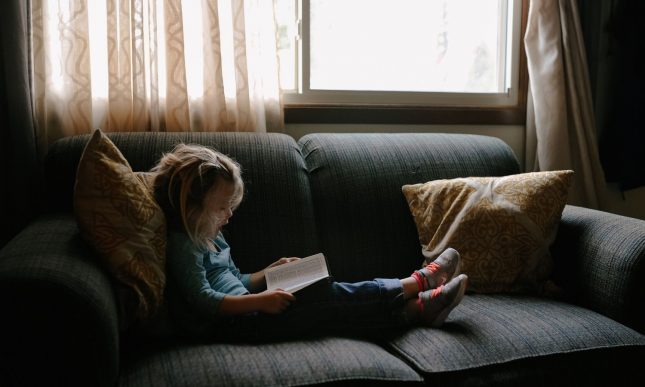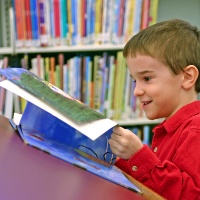Reading is one of these fundamental, must learn skills and probably one of the things that causes us as parents and caregivers the most angst while our children are at Primary school. It can become all-consuming as a parent to make sure our kids are reading at the age appropriate level and are not being left behind.
Learning about how they learn to read can have it’s own problems. Some schools are very proactive and run parent info evenings dedicated to telling parents how the whole ‘learn to read’ process works in their school while others leave it up to parents to ask.
Here’s what we’ve learned about how kids learn to read and what’s most important.
Why is it important for my child to read?
The ability to read is vital. It paves the way to success in school, which can build self-confidence and motivate your child to set high expectations for life.
People read for many reasons:
- for pleasure and interest
- for work
- to obtain information that will help them make choices and decisions
- to understand directions (such as those on street signs and in recipe books)
- to learn about the world
- to keep in touch with family and friends
Learning to read
Learning to read is built on a foundation of language skills that children start to learn at birth. It’s an amazing and complex process. We all know that wee ones are like “little sponges” and appear to learn new things very easily. Most children develop certain skills as they move through the early stages of learning language.
Learning to read does not happen all at once. It involves a series of stages that lead, over time, to independent reading and to fluency.
The best time for children to start learning to read is when they are very young, usually at the preschool age. This is when they are best able to start developing basic reading skills.
These are the stages involved in learning to read –
1. The pre-reader and the beginning reader:
- likes to look at books and likes to be read to
- likes to behave like a reader – for example, holds books and pretends to read them
- learns about words by looking at picture books and playing with blocks that have letters on them, magnetic letters, and so on
- learns about words from songs, rhymes, traffic signs, and logos on packages of food
- learns how text works – for example, where a story starts and finishes and which way the print proceeds
- begins to understand that his or her own thoughts can be put into print
- uses pictures and memory to tell and retell a story
2. The emerging reader:
- is ready to receive instructions about reading
- learns that text is a common way to tell a story or to convey information
- begins to match written words to spoken words and to perceive relationships between sounds and letters
- begins to experiment with reading, and is willing to try to say words out loud when reading simple texts
- finds the pictures helpful in understanding the text, and learns that the words convey a message consistent with the pictures
3. The early reader:
- develops more confidence and uses a variety of methods, such as relying on visual cues, to identify words in texts
- adapts his or her reading to different kinds of texts
- recognizes many words, knows a lot about reading, and is willing to try new texts
4. The fluent reader:
- thinks of reading as a good thing and does it automatically
- uses a variety of methods to identify words and their meanings
- can read various kinds of texts and predict events in a story
- relates the meaning of books to his or her own experience and knowledge, and understands what is new
It takes time to pass through each of these stages, and every child learns at their own pace. Give them plenty of attention and support as he or she moves along. You can play an important role in helping your child develop the reading skills he or she needs to succeed with reading!
So how do kids learn to read?
There are several complex, important things that need to fall into place in order to learn how to read. Children first need to learn how sounds are connected to print, they need to develop fluency and to learn to construct meaning from print.
Understanding how sounds are connected to print
Kids first need to learn that sounds are connected to the print they see around them before they can begin to read. This means they need to learn that letters of the alphabet mean nothing on their own and that it is only when they are blended together and pronounced as words that they mean something.
So…once they’ve got a handle on this they will begin to understand that our speech can be broken into bits and that those bits can be represented by letters printed on a page. This is called phoneme awareness.
Summary – it is very important that a would-be reader knows that written words represent spoken words.
Why is this so important? If a child can’t perceive the sounds in spoken words – for example, if they can’t “hear” the at sound in fat and cat and cannot understand that the difference between the two words is in the first sound, they will have terrible difficulty “sounding out” words accurately.
Developing fluency
Being able to read at speed is important if a child is going to be able to gain any meaning from what he or she reads. This is called developing fluency. And, as is the adage with many things, practice makes perfect.
Kids vary in the amount of practice they require in order to read fluently. Some children need only read a word once in order to recognise it again, some need to read it at least 10, 14, 20 times for it become familiar to them. The average exposure for a word to become familiar is 14.
This is why it is so important for a child learning to read to read large amounts of text at the level they are at with 95 percent accuracy. This might explain to you parents why it seems your child seems to be receiving the same readers over and over. Sometimes as parents we don’t always understand the importance of this repetitive reading.
It is also important to realise how spelling practice helps develop reading fluency. Learning and practicing spelling words shows kids that written words are made up of chunks of letters – like syllables. When they being to realise this they’ll stop sounding words out letter by letter and begin sounding out groups of letter, chunks of letters.
Constructing meaning from print
The ultimate goal for readers is that they understand what they read and gain some meaning from it. It is no good for a child just to read a sequence of words if they are not able to tell us what they have just read and what it means.
The ability to understand what they are reading means they are comprehending what the words on the page say. There are lots of ways a reader becomes a good comprehender.
A good comprehender will be able to relate what he or she already knows to what they have read on the page. This will mean that what they have read will have some meaning for them.
A good comprehender …
- also needs to have a good vocabulary so they are able to define the words they read in their own mind and
- will have a knack for summarizing, predicting and clarifying what they have read.
Be sure to read our other articles on reading and how you can help your little one become the best little reader they can be.
Useful Websites
U.S.A. website providing free online reading games for pre-school and junior primary school children.





